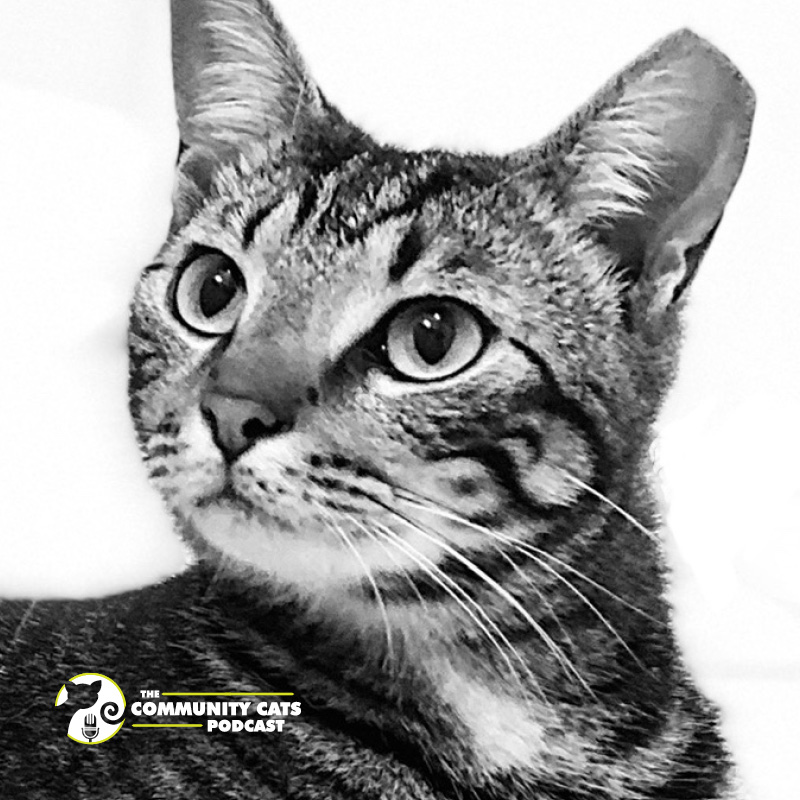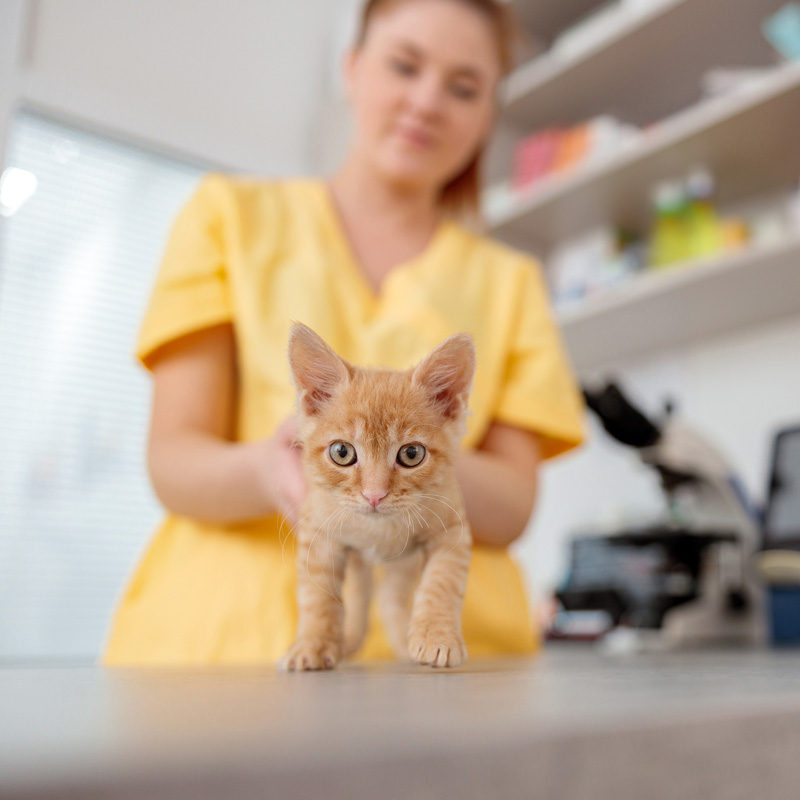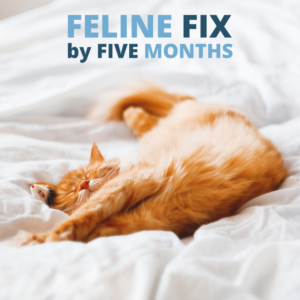
When Pets Fly with Marta Negro, Founder of Help the Dog Fly
May 17, 2022
A Small Organization Making a Big Impact with Linda Chitwood, Volunteer Director, Homeless Animals Relief Project
May 24, 2022
Written by Philip A. Bushby, DVM, MS, DACVS | Previously published on March 3, 2022, by DVM360.com
Foreword & Afterword by Esther Mechler, President, and Founder of Marian’s Dream and United Spay Alliance
Foreword
For decades, shelters were overrun by enormous numbers of unplanned, unwanted litters of kittens. The phenomenon even had a name, kitten season. Unfortunately, some shelters still experience this kitten season if they do not have strong educational campaigns to spay or neuter cats BEFORE they go into heat or have started producing hormones – usually by four or five months. These hormones not only result in unplanned litters, but the young males also begin to spray and mark, and the females become far more likely to develop mammary gland cancer.
 Realizing all these negative outcomes, Marian’s Dream convened a task force to examine the pros and cons of moving the recommended optimum age for spay/neuter of cats back from the commonly-used recommendation of six months – to “by five months.” After some deliberation, veterinarians representing more than a dozen major organizations had agreed. And so, the Feline Fix by Five campaign was born. For the past many years, advocates and supporters around the country have been promoting for felines to be spayed/neutered by five months of age. Today, the campaign is a program of both Marian’s Dream and United Spay Alliance.
Realizing all these negative outcomes, Marian’s Dream convened a task force to examine the pros and cons of moving the recommended optimum age for spay/neuter of cats back from the commonly-used recommendation of six months – to “by five months.” After some deliberation, veterinarians representing more than a dozen major organizations had agreed. And so, the Feline Fix by Five campaign was born. For the past many years, advocates and supporters around the country have been promoting for felines to be spayed/neutered by five months of age. Today, the campaign is a program of both Marian’s Dream and United Spay Alliance.
Dr. Phillip A. Bushby, a well-respected animal welfare advocate and recipient of the AVMA’s 2012 Animal Welfare Award, wrote the following article about a survey that was done five years after this policy was endorsed by the AVMA, AAFP, AAHA, and Association of Shelter Vets.
•••
For decades, veterinarians have recommended the spay and neuter of cats at the age of 6 months or older, but the literature does not document any scientific evidence justifying waiting until this point, after which cats are sexually mature. In 2016, a veterinary task force was established to reconsider the recommended age for spay and neuter of cats. This task force recommended that the age for spay and neuter be reduced to 5 months of age or lower.1 The consensus document from the task force stated, “Current scientific evidence documents the benefits of spaying kittens before the first estrous cycle, including the following:
- Decreased risk for mammary carcinoma (the third most common cancer in cats)
- Elimination of reproductive emergencies such as pyometra and dystocia
- Avoidance of unintended pregnancies that may occur as early as 4 months of age
- Potential decrease in behavioral problems linked with cat relinquishment.2”
 The task force also recommended castration of male cats prior to 5 months of age 2. Castration prior to sexual maturity reduces sexual behaviors often cited as reasons for relinquishment to shelters: roaming, fighting, and spraying to mark territory. The traditional belief that castration prior to sexual maturity may lead predispose to urinary obstruction in male cats has been disproven.3,4
The task force also recommended castration of male cats prior to 5 months of age 2. Castration prior to sexual maturity reduces sexual behaviors often cited as reasons for relinquishment to shelters: roaming, fighting, and spraying to mark territory. The traditional belief that castration prior to sexual maturity may lead predispose to urinary obstruction in male cats has been disproven.3,4
After the report from the task force, the Feline Fix by Five campaign was established in order to raise awareness among veterinarians and the public on the new recommended age for feline sterilization. To date, the American Veterinary Medical Association (AVMA), American Animal Hospital Association (AAHA), Association of Shelter Veterinarians (ASV), American Association of Feline Practitioners (AAFP), 14 state veterinary associations, and numerous humane organizations have endorsed the concept of spay or neuter of cats by 5 months of age.5
In early 2021 a national veterinary survey was conducted to determine if veterinarians were lowering the recommended age for sterilization of cats. The survey revealed that 61% of veterinarians were recommending ovariohysterectomy of female cats on or before 5 months of age, and 51% were recommending castration of male cats on or before 5 months of age.6
•••
Afterword
While the percentage of veterinarians who embrace the updated guideline continues to rise, today just over 50% endorse neutering males by five months. This means that nearly half of practicing veterinarians continue to advise clients to wait until a male cat is six months old to be neutered. These young males then spray and mark, fight and wander — often losing their homes and access to vet care. As for the females, the numbers are slightly better but nearly 40% of veterinarians are still recommending families wait until their cat is six months old, or even longer.
We are seeing slow movement in the right direction, but we need to continue our efforts to persuade more veterinarians to adjust the timetable for the well-being – and welfare – of all cats. When Fix by Five is embraced by a strong majority of veterinarians, we will see a society in which every cat has a chance to be a wanted cat! That is a normal worth working for.
Join the movement. Learn more about the Feline Fix by Five campaign, and share our resources with your veterinarian. Ask them to join the growing list of participating veterinarians. And tell your friends – if you love your feline, fix by five!
References
- Veterinary Task Force on Feline Sterilization. Veterinary Task Force on Feline Sterilization Recommendations for Age of Spay and Neuter Surgery. 2016. Accessed January 10, 2022. https://www.felinefixbyfive.org/the-facts
- Veterinary Task Force on Feline Sterilization Consensus Document. 2016. Accessed January 10, 2022. https://www.felinefixbyfive.org/endorsement-statement
- Segev G, Livne H, Ranen E, Lavy E. Urethral obstruction in cats: predisposing factors, clinical, clinicopathological characteristics and prognosis. J Feline Med Surg. 2011;13(2):101-108. doi:10.1016/j.jfms.2010.10.006
- Buffington CA, Westropp JL, Chew DJ, Bolus RR. Risk factors associated with clinical signs of lower urinary tract disease in indoor-housed cats. J Am Vet Med Assoc. 2006;228(5):722-725. doi:10.2460/javma.228.5.722
- Endorsements. Feline Fix by Five. Accessed June 7, 2019. https://www.felinefixbyfive.org/endorsements
- Feline Fix by Five. Veterinary Survey; Age of Spay Neuter of Cats. 2021. Accessed January 10, 2022. https://static1.squarespace.com/static/59eb7f7fe9bfdf9e27e926f9/t/611ae854cd0917436df7b942/1629153364921/NewNormal-FelineFixByFive.pdf




